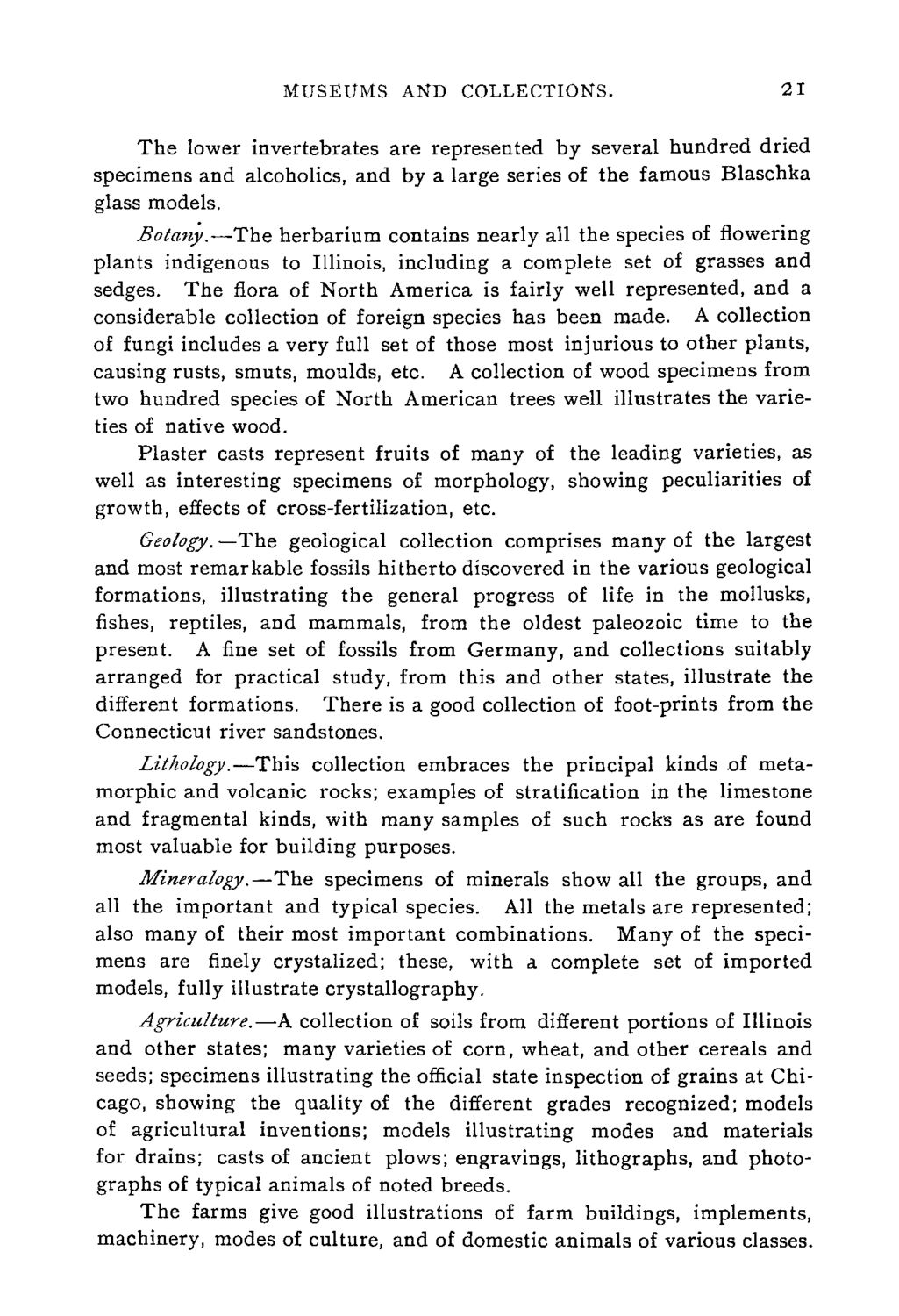| |
| |
Caption: Course Catalog - 1892-1893
This is a reduced-resolution page image for fast online browsing.

EXTRACTED TEXT FROM PAGE:
MUSEUMS AND COLLECTIONS. 21 The lower invertebrates are represented by several hundred dried specimens and alcoholics, and by a large series of the famous Blaschka glass models. Botany.—The herbarium contains nearly all the species of flowering plants indigenous to Illinois, including a complete set of grasses and sedges. The flora of North America is fairly well represented, and a considerable collection of foreign species has been made. A collection of fungi includes a very full set of those most injurious to other plants, causing rusts, smuts, moulds, etc. A collection of wood specimens from two hundred species of North American trees well illustrates the varieties of native wood. Plaster casts represent fruits of many of the leading varieties, as well as interesting specimens of morphology, showing peculiarities of growth, effects of cross-fertilization, etc. Geology. —The geological collection comprises many of the largest and most remarkable fossils hitherto discovered in the various geological formations, illustrating the general progress of life in the mollusks, fishes, reptiles, and mammals, from the oldest paleozoic time to the present. A fine set of fossils from Germany, and collections suitably arranged for practical study, from this and other states, illustrate the different formations. There is a good collection of foot-prints from the Connecticut river sandstones. Lithology.—This collection embraces the principal kinds of metamorphic and volcanic rocks; examples of stratification in the limestone and fragmental kinds, with many samples of such rocks as are found most valuable for building purposes. Mineralogy.—The specimens of minerals show all the groups, and all the important and typical species. All the metals are represented; also many of their most important combinations. Many of the specimens are finely crystalized; these, with a complete set of imported models, fully illustrate crystallography. Agriculture.—A collection of soils from different portions of Illinois and other states; many varieties of corn, wheat, and other cereals and seeds; specimens illustrating the official state inspection of grains at Chicago, showing the quality of the different grades recognized; models of agricultural inventions; models illustrating modes and materials for drains; casts of ancient plows; engravings, lithographs, and photographs of typical animals of noted breeds. The farms give good illustrations of farm buildings, implements, machinery, modes of culture, and of domestic animals of various classes.
| |